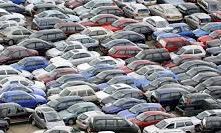http://www.freepressjournal.in/looking-an-auto-gift-horse-in-the-mouth-rn-bhaskar/820291
Looking an auto gift-horse in the mouth?
— By | Apr 07, 2016 12:37 am

In January this year, the Society of Indian Automobile Manufacturers (SIAM) made an interesting proposal to the Ministry of Road Transport and Highways. The proposal was a variant of the “cash for clunkers scheme” that was introduced in the US in 2009.
The official name for the US programme was the Car Allowance Rebate System (CARS). It was a $3 billion Federal scrappage programme. It was meant to provide incentives to US residents to purchase new fuel efficient cars, while trading in the less fuel efficient vehicles they already owned. The programme was aimed at providing a stimulus to the US auto industry, and thus to the entire US economy. The programme officially started on July 1, 2009, and ended on August 24 the same year, primarily because the funds meant for this programme were exhausted.
 The US Department of Transportation reported that the average fuel efficiency of the traded-in old cars was just 15.8 mpg (miles per gallon), compared to 24.9 mpg for the new cars that replaced them. That meant a 58% fuel efficiency improvement. A subsequent study pointed out some flaws in the entire programme. First, claimed the study, the total costs were greater than the total benefits causing the government to lose $1.4 billion.
The US Department of Transportation reported that the average fuel efficiency of the traded-in old cars was just 15.8 mpg (miles per gallon), compared to 24.9 mpg for the new cars that replaced them. That meant a 58% fuel efficiency improvement. A subsequent study pointed out some flaws in the entire programme. First, claimed the study, the total costs were greater than the total benefits causing the government to lose $1.4 billion.
The SIAM proposal, submitted to the government in January this year, takes care of some of the major “shortcomings” of the US programme. Instead of asking the government to finance an ‘encouragement’ package, SIAM only asked for a reduction in taxes for purchase of new vehicles against the surrender of vehicles that were over 15 years old. SIAM suggested that the government only offer a 50% excise rebate, instead of a cash incentive.
This way, the government does not have to pay out any money. Instead it gets some money on sales that might not have occurred in the first place. Such a proposal, if accepted, would encourage owners of old vehicles to trade in their fuel-guzzling and polluting vehicles and opt for spanking new vehicles which are bound to be more fuel efficient, and less polluting. What is likely to encourage them is a discount in excise duty payable. Normally, excise duty could be anywhere between Rs.36,000 and Rs.2.24 lakh, depending on the vehicle purchased. A 50% excise duty discount under this scheme would mean a reduction in vehicle prices by Rs.16,000 on low priced vehicles to Rs.1.12 lakh for higher priced vehicles.
The excise duty discount would create consumer demand for new vehicles, thus kick-starting the automobile industry which employs countless thousands of people. It would introduce more fuel-efficient and less polluting vehicles on the road as well. And it would generate scrap for the steel mills, which would save the country huge amounts of foreign exchange for import of metal scrap. Steel mills use a bit of scrap along with iron ore in their smelters to make iron and steel.
SIAM’s estimates show that adopting this scheme could fetch the government additional revenues (thorough the 50% residual excise duty) of around Rs.32,197 crore (see chart).
This would be in addition to fuel savings on account of more fuel efficient, and less polluting vehicles coming on the road. SIAM estimates the savings to be around 7.52 billion litres per annum from these vehicles alone. The scrap should also help save on iron ore, coal and limestone worth Rs.17,108 crore. According to MSTC, a government owned company engaged in importing and recycling scrap iron, the scrap business alone should generate employment for around 7,000 people.
The proposal was put up before the transport ministry in mid January. It was then sent to the finance ministry. It was received well in time for being included in the Union budget proposals. That could have added a sense of direction for the economy. It would have been an environment-friendly move as well. But none of this happened. Both the ministries concerned have maintained a stony silence on why this proposal was not accepted. The silence does raise a few disturbing questions. Isn’t it the function of the government to kickstart industry during unsettling times because of a turbulent global market, and a dormant domestic market racked by two failed monsoons?
Is soliciting of FDI the only means to promoting growth? Why not encourage domestic industry to produce more through fiscal measures aimed at galvanising demand?
Does a government have to work only through bans and censures? In the case of vehicles, the Supreme Court had to resort to a ban on diesel vehicles in Delhi only because the government had failed to introduce sensible measures to phase out old and polluting vehicles.
Banning old vehicles is not the answer. Encouraging old vehicles to be consigned to the scrap yard, by allowing owners a reduction in excise duty for purchase of new vehicles, is a better way. The money got from turning in old vehicles as scrap, and the money saved through the proposed concessional excise duty, would together provide a good incentive for customers to opt for newer, less polluting and more fuel efficient vehicles instead.
It is both sad and perplexing to see the government slumber over good proposals. The SIAM proposal is an excellent example of looking a gift horse in the mouth.





































COMMENTS